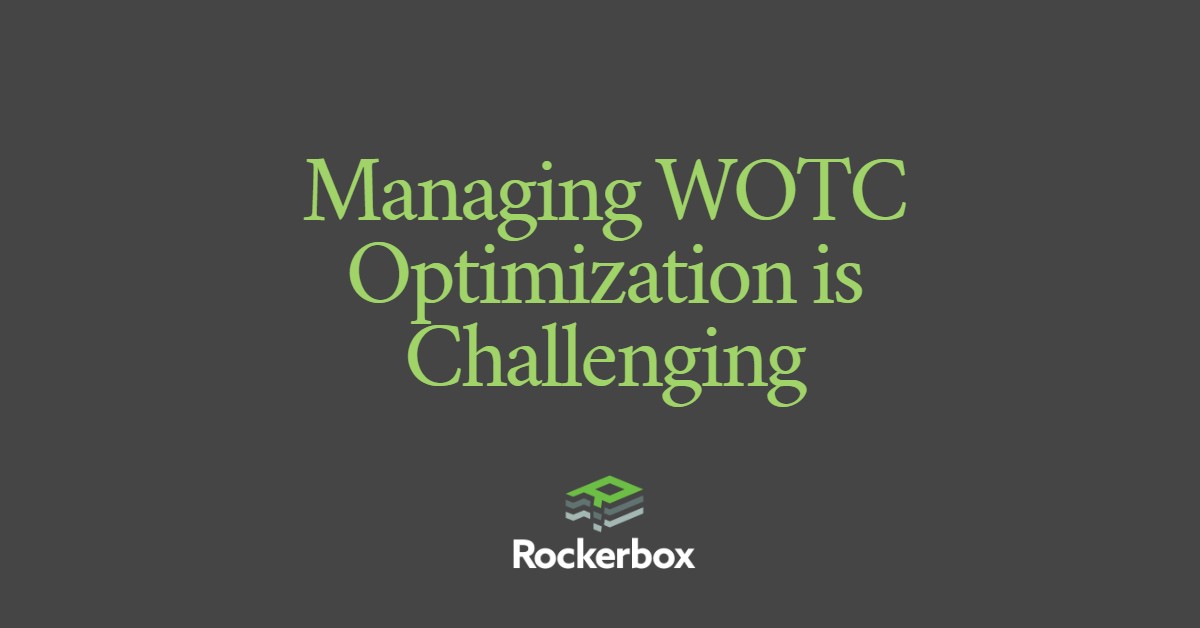
Behind the Portal: The Cumbersome Reality of Submitting WOTC Applications to State Workforce Agencies
For employers and consultants navigating the Work Opportunity Tax Credit (WOTC) program, there is a major hurdle that rarely gets discussed outside the small circle of those who deal with it daily. Submitting WOTC applications to state workforce agencies (SWAs) is highly manual, fragmented, and time-consuming.
While the WOTC program is federally funded, it is administered at the state level. Each of the 50 states and U.S. territories operates its own process for receiving and certifying WOTC applications. As of Summer 2025, 47 states allow employers or third-party consultants such as Rockerbox to submit applications through online portals. On the surface, this appears to be a win for digital transformation. In practice, the experience is far from seamless.
The Access Maze: Getting Into the Portals
Before submitting a WOTC application online, an employer must first gain access to each state’s portal. Each state has its own process.
- Some states require employers to mail documentation to request access.
- Others allow requests for access to be made through the portal itself.
- A few require a phone call to a state representative to begin the account setup.
Once access is granted, some states require two-factor authentication, often using tools such as Google Authenticator or Authy. This adds another layer of complexity for employers with multiple users or those managing multiple state logins.
For companies hiring in multiple states, the result is dozens of unique logins, security protocols, and access credentials. These must be tracked, managed, and updated on an ongoing basis.
Submitting a Single WOTC Application: A Manual Grind
Once access is secured, the next step is to submit the application. Unfortunately, there is no uniform process among the states. Each portal has a different interface, workflow, and set of data requirements.
- On average, it takes 90 to 120 seconds to manually submit a single WOTC application through a portal.
- Some states are faster and others are slower, but all require human intervention.
No SWA currently allows WOTC applications to be submitted via an API. This means there is no automation in the actual transmission of data. Every application must be entered or uploaded manually.
Bulk Upload: Better, But Still Burdensome
Approximately 26 states support some form of a bulk upload feature that allows employers or consultants to submit multiple WOTC applications at one time.
However, this is still not automation.
- The bulk upload file must be created manually by someone familiar with the state’s required file format, which may be CSV, XML, Excel, or another format.
- The upload process itself takes three to four minutes on average, not including preparation time.
- Each state’s portal handles bulk uploads differently, requiring familiarity with state-specific templates and rules.
If even one field in the file is incorrect, the entire batch may be rejected, forcing the user to start over.
Tracking and Downloading Determinations: Another Manual Process
After applications are submitted, many states provide status updates such as certified, denied, pending, or requesting additional information. However, these must be accessed manually through the portal.
- It can take up to two minutes per application just to check status and download a determination.
- There is no centralized dashboard for multi-state employers.
- Consultants managing clients in multiple states must log into each state individually to gather updates.
This adds hours of administrative work every week for WOTC administrators.
Challenging a Determination: Still Manual and Often Offline
If a state denies a WOTC application in error, challenging the decision is rarely an in-portal process. Employers and consultants often have to email or call the SWA directly, hoping to reach someone familiar with the case or the program.
Some states require that challenges include faxed or mailed documentation, adding even more friction to an already outdated system.
Paper-based (Mail-Only) States
Despite the availability of digital tools, three states still require employers to mail WOTC applications through the postal service. This means:
- Printing paper applications
- Assembling hard-copy supporting documents
- Physically mailing packets
- Waiting days or weeks for processing, if it happens at all
This delay can threaten compliance with the 28-day WOTC submission deadline, especially if mail delivery is slow or the paperwork is incomplete.
Final Thoughts
The promise of WOTC is powerful. Employers can earn up to $9,600 in tax credits per eligible new hire. Yet the manual, disjointed, and outdated processes used by state workforce agencies greatly reduce the program’s potential.
For companies hiring across state lines, the burden of gaining portal access, manually submitting applications, tracking determinations, and managing challenges can add up to 10 minutes per application. Multiply that by hundreds or thousands of hires, and the labor cost becomes a significant barrier.
As of today:
- No states have adopted APIs for WOTC submissions.
- Bulk upload processes are still far from fully automated.
- Multi-state login management is an ongoing logistical challenge.
- Determination reporting consumes large amounts of time.
- Appeals often take place outside the portal system.
Consultants such as Rockerbox are developing internal tools, robotic process automation (RPA), and artificial intelligence to manage these fragmented processes for clients. However, until states modernize their systems by offering true digital interoperability, centralized access, and API-driven workflows, WOTC will remain a valuable but operationally burdensome program for American businesses.
If you are an employer struggling with WOTC portal management across multiple states or just getting started with the program, contact Rockerbox. We have already navigated every state’s process so you do not have to.